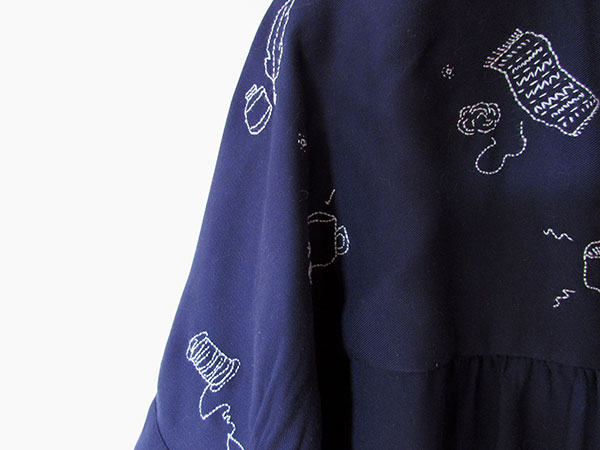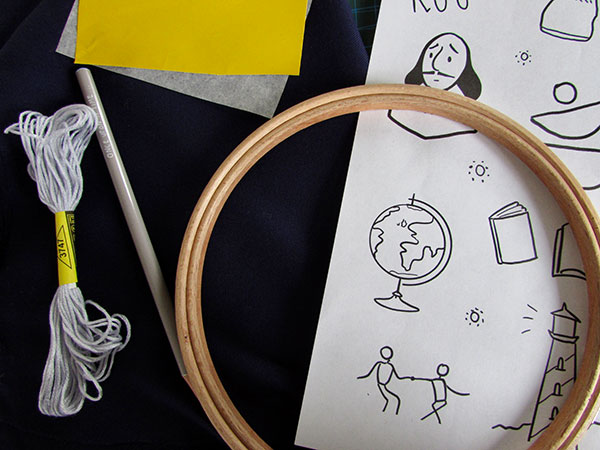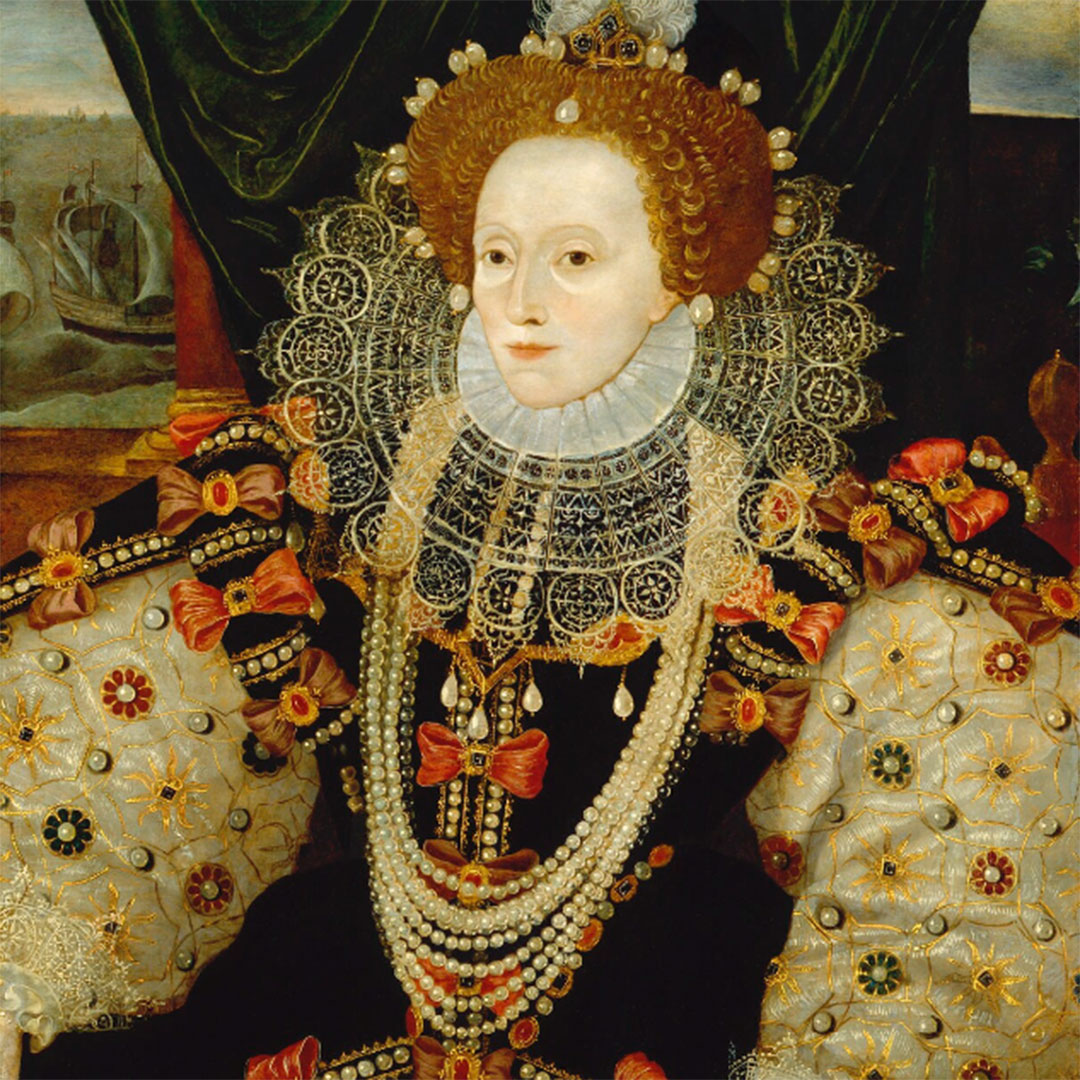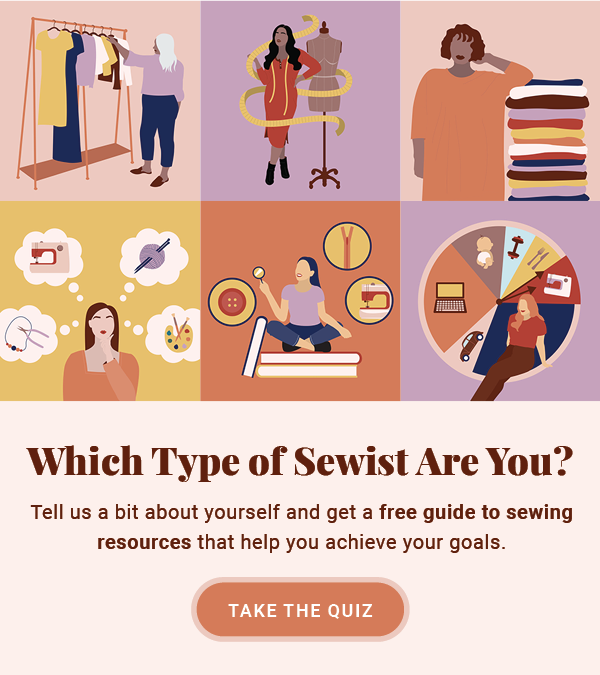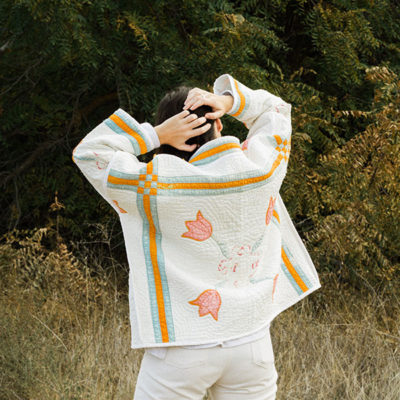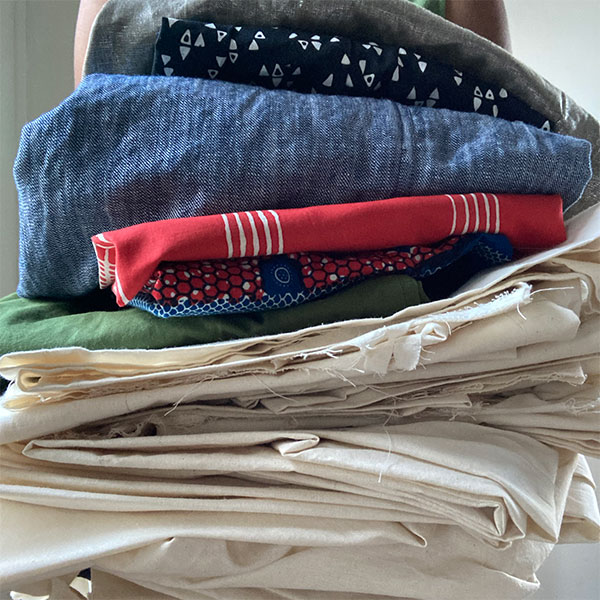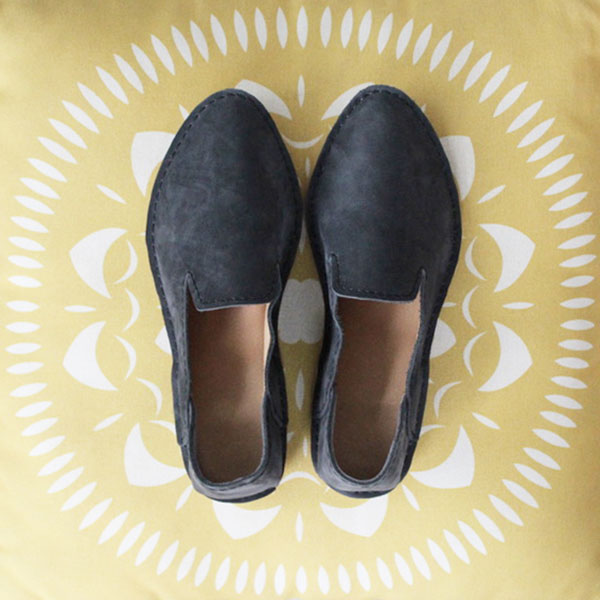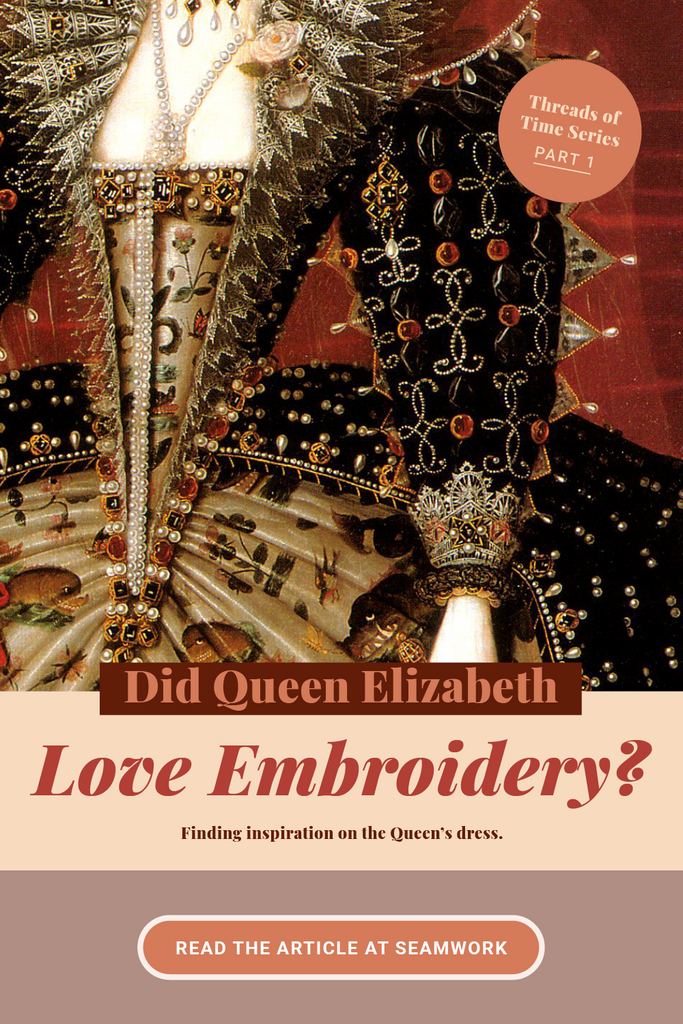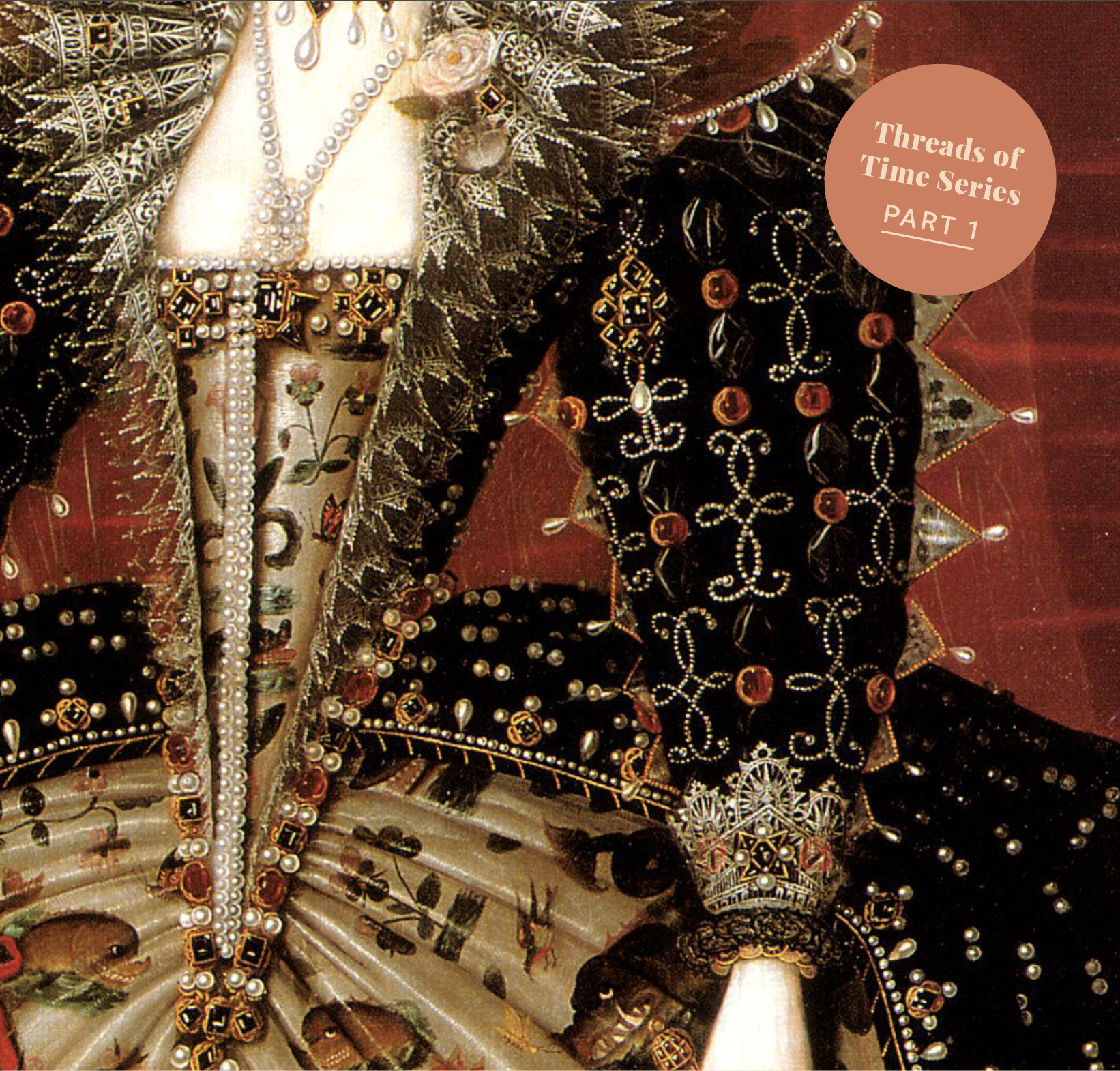
Have you ever used history to plan your sewing? My name is Jess, and I run a podcast called Woven Threads, where I explore some of the craft, art, and heritage that is woven through all of our lives.
In this Threads of Time series, I will look at a different moment in the history of fashion here in the UK and focus on the craft exhibited in that particular snapshot in time and use my research to make a garment using a Seamwork pattern. I hope my projects will inspire you to look at the incredible history we have and use it to fuel your own projects.
A period of time I particularly love is the 16th century, especially the late 1500s when Elizabeth I was ruling. The big ruff collars, the stand-out make-up, Elizabeth was a person who understood the importance of image in conveying a message. One of the things I noticed about Elizabethan court dress was the rich embellishment and embroidery, and lots of questions sprang to mind: When did people start embroidering clothes? Did Elizabeth love it? Was it a popular craft?
Before we take a little journey into the 16th century, what do I mean when I say embroidery? According to a definition I found on the inter-webs, embroidery “refers to any textile foundation that is decorated with needle and thread. Embroiderers have almost complete freedom to create either linear patterns or flowing pictorial compositions.” I love that idea of the process of embroidery being almost painting with thread. There is something kind of beautiful about that free creation, transmitting a thought or emotion with a needle and thread instead of paint and a brush.
Embroidery wasn’t a new craft in England in the 16th century. In fact, British embroiderers were known throughout the Middle Ages for their embroidered work for the church. The oldest embroidered European garment that has survived is a 10th-century stole of St. Cuthbert, which is on display at Durham cathedral.
When King Henry the 8th decided that he wanted to separate from the church so he could have his dastardly way with the various ladies he married, beheaded, and divorced, the demand for elaborately designed and embroidered garments for the church plummeted. But by the late 16th century and the reign of Queen Elizabeth, the desire for rich clothing and decorations had grown, and the embroidery industry was saved! No longer just craft for worship and church, embroidery now trickled down into the social and domestic parts of life.
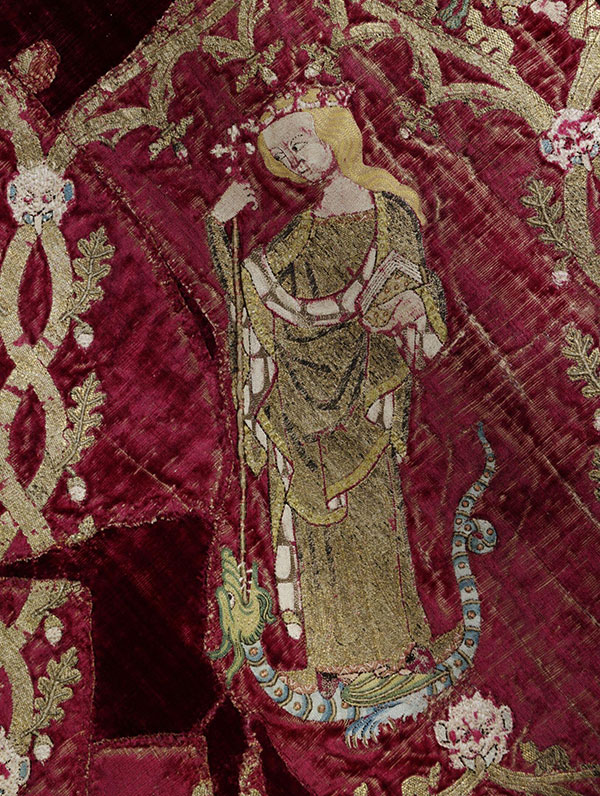
A Brief History of English Embroidery
If you were rich in the 16th century, you needed to show off whenever you went to court, so the taste for rich and embellished clothing increased. At this time, you couldn't just pop down to your local high street for a cheap sparkly top or cushion, so people would have to make and adorn their own clothes and household textiles using simple techniques. Sources for the designs came from different things, but embroiders were often inspired by illustrated books or the natural world. It appears that some more advanced projects were designed by professionals and sold in kits for the amateur needleworker to complete, very similar to the craft kits you can get at your local craft shop today.
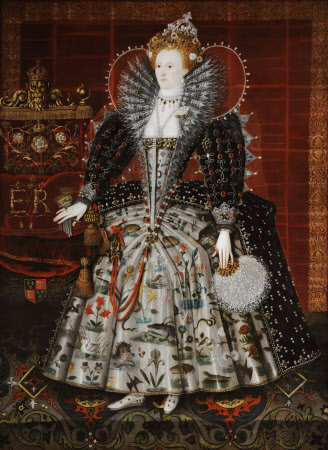
Embroidery in the Hardwick Hall Portrait
One portrait I discovered that shows off some pretty awesome embroidery is the Hardwick Hall portrait. This painting shows the Queen in her usual Elizabethan get-up, with a white dress embroidered with some amazing details. When you look up close, you can see incredible embroidery designs with plants, flowers and even a sea monster.
It is generally believed that Lady Bess Harwick, a friend of the Queen’s, gave her the fabric and even possibly embroidered it herself. I can just imagine that Bess would be thinking: “Now what shall I put on Lizzy's gift . . . I know some flowers she likes, and you know what would be great, a massive sea monster right next to it!”
There is for sure a kind of innocent joy to this design with its monsters, swans, and snakes—as well as a lot of hard work. Flowers were a common motif with embroiderers, especially as they were viewed as being highly symbolic. On this particular dress, Bess put some of Elizabeth's favorite flowers, such as pansies, which stood for thoughtfulness, roses symbolic of her family, and white lilies for purity. The symbolic nature of flowers is such an interesting way to communicate and was often used to create beautiful designs and messages from the people who wore them.
My Inspiration from Elizabeth and Lady Bess
As I was learning about this beautiful art form, I was thinking of how we choose to make statements today—about who we are and what we love. Fashion has always been a way to express these things, and embroidery as a medium is an exciting and intuitive way to tell a story. And so I decided to create something inspired not only by Elizabeth's dress, but also her friend Lady Bess, who created the embroideries.
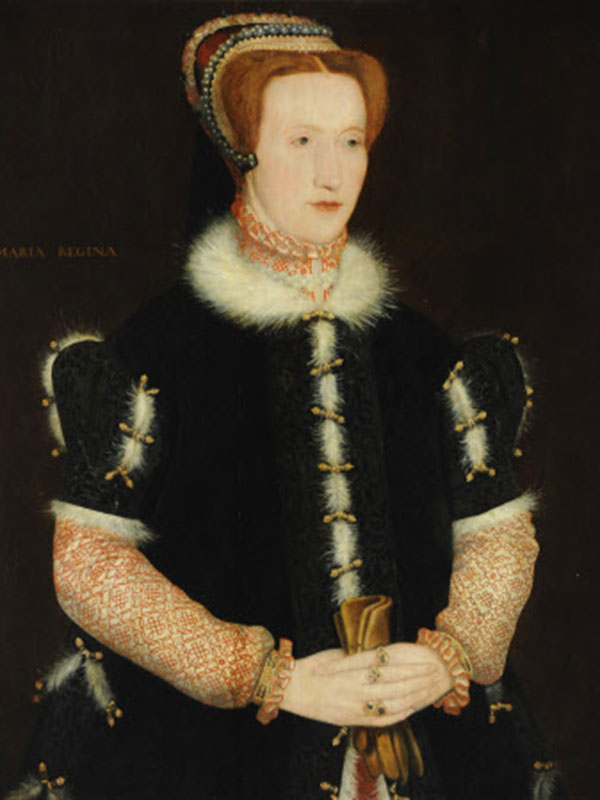
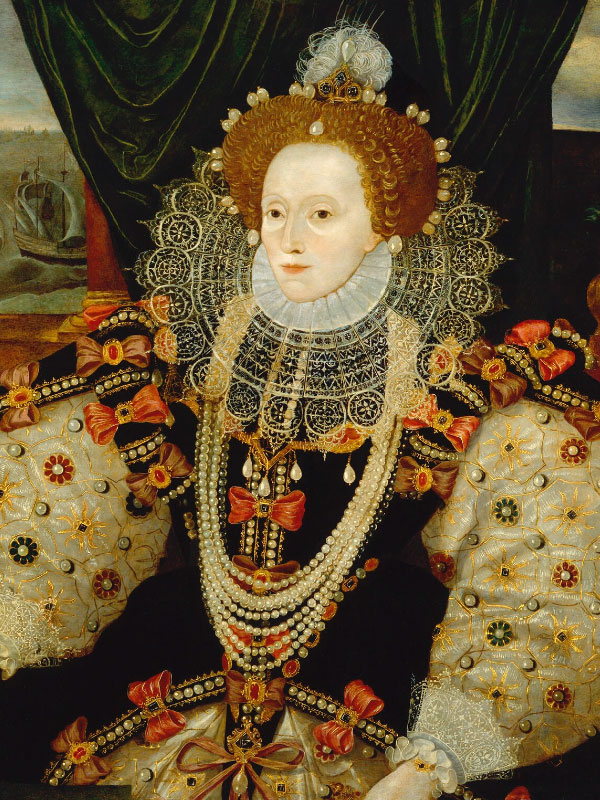
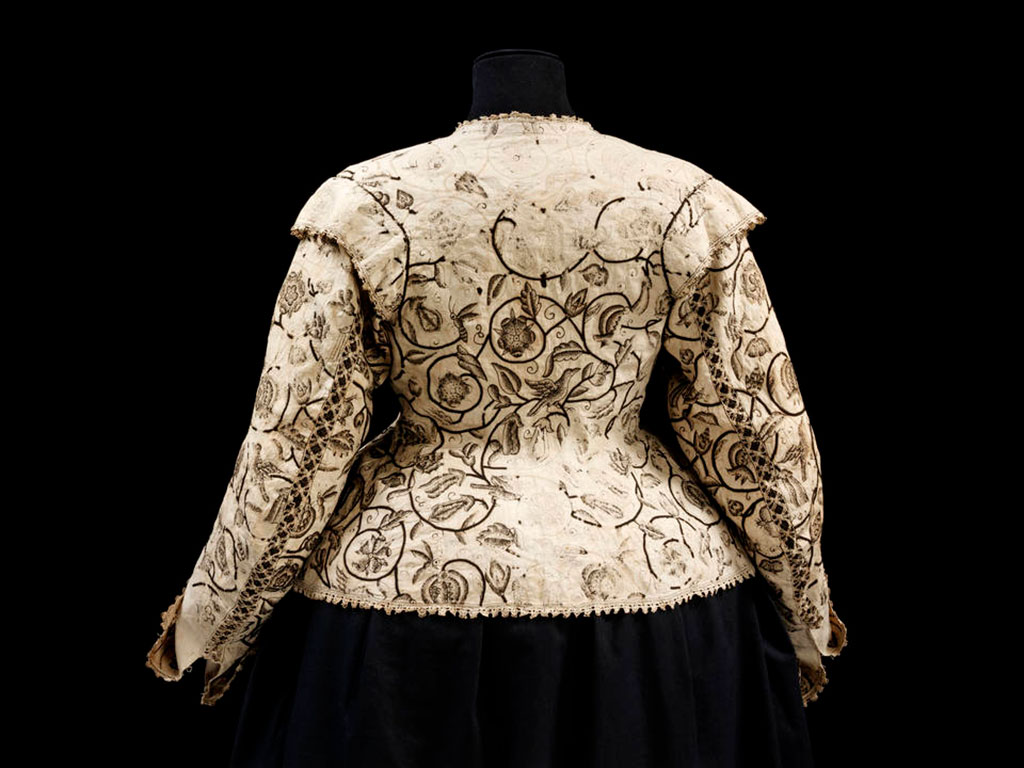
I wanted to choose a modern pattern that would get a lot of wear and had a statement panel of some kind that I could embroider. And so I chose the Seamwork Jo dress, and I asked my best friend—who is an amazing illustrator—to create my design. She chose things that remind her of me, such as my love for tea and lighthouses (plus a couple of in-jokes!). I traced over yellow carbon paper to transfer the illustrations onto the dark fabric and then did a simple backstitch to embroider the design.
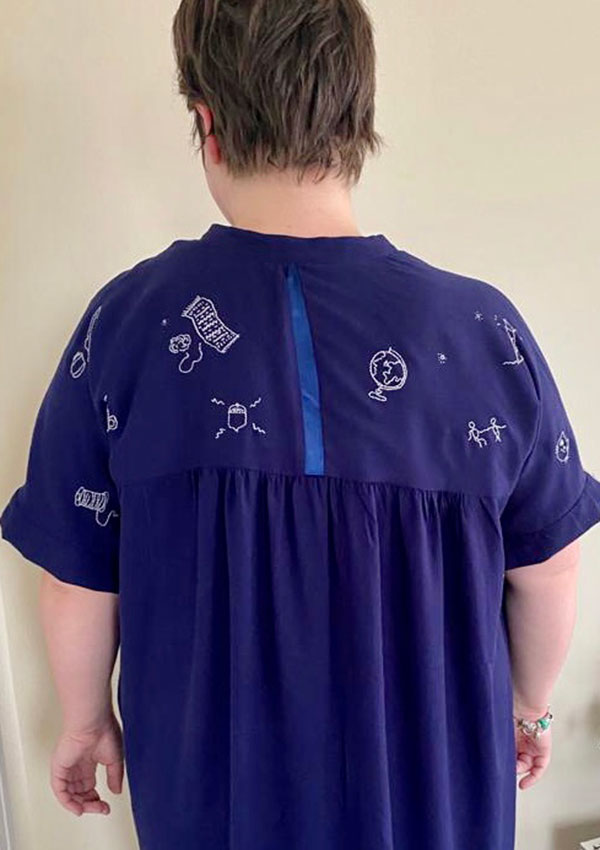
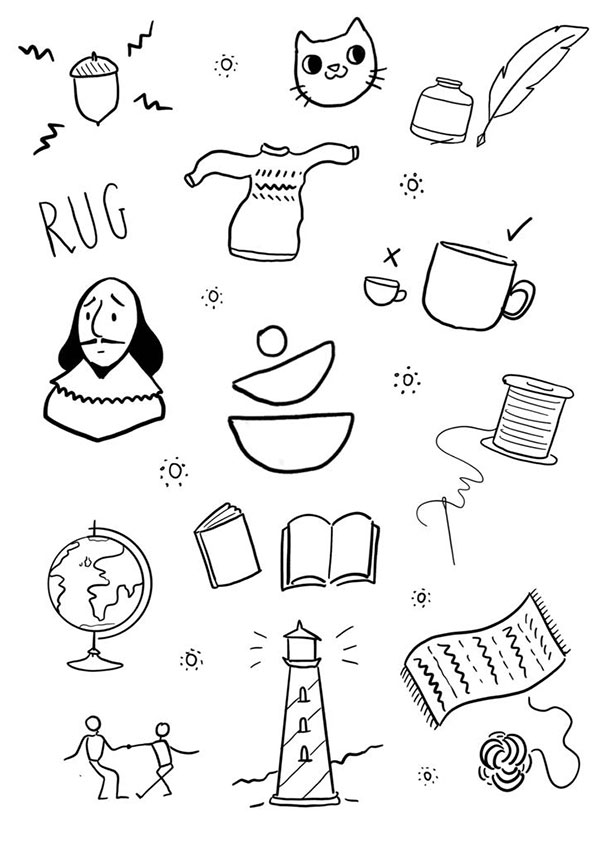
Although it's not as elaborate as Lady Bess’ design—and I am for sure not as skilled of an embroiderer as her—I love how it turned out. The main thing I learnt from this project is that it's really inspiring to bring a message and story into our makes, literally by drawing meaningful designs on the fabric with thread. It is also so much fun to collaborate creatively with friends, which I would love to do more of in the future. This is not the last time I’ll add something personal to my sews with embroidery, and I hope that it's inspired you to give it a go as well.
